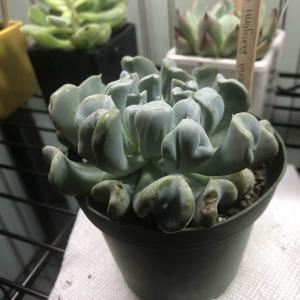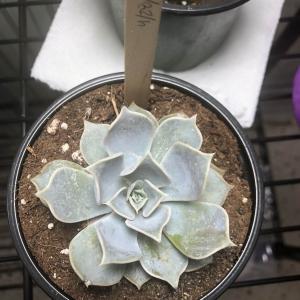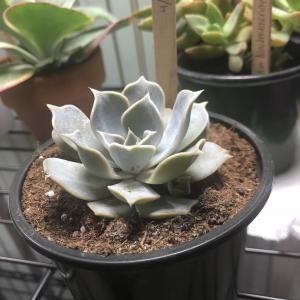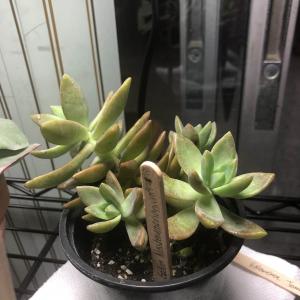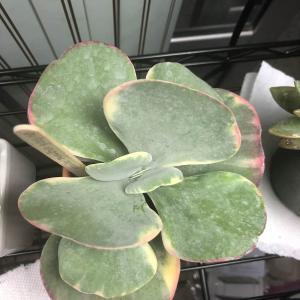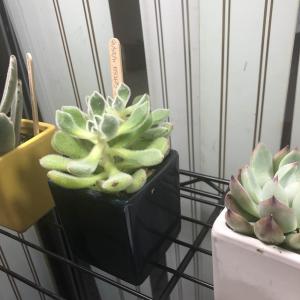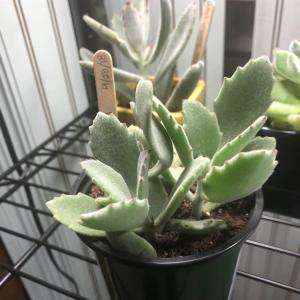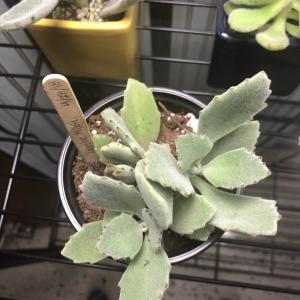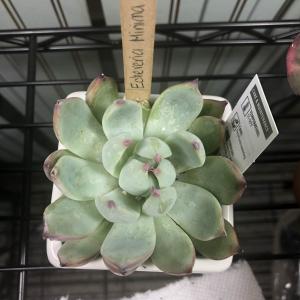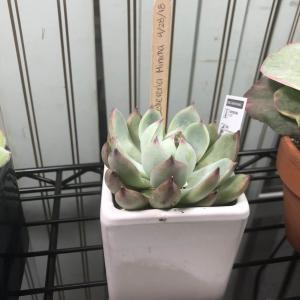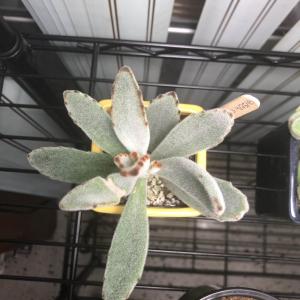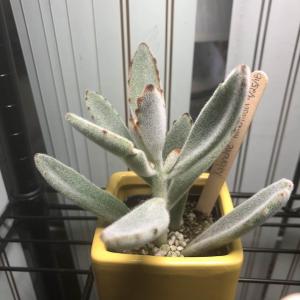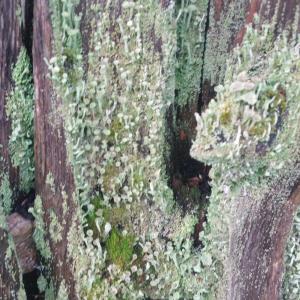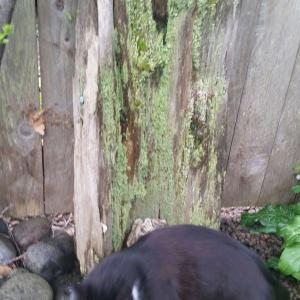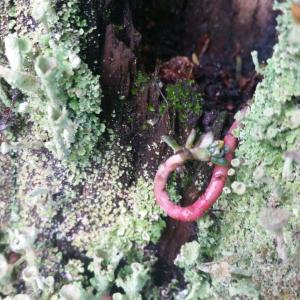文章
Miss Chen
2018年05月02日

Close-up of FlowerDescription: This herbaceous perennial plant is 4-12" tall, consisting of a short stem that branches at ground level into 2 basal leaves with long petioles. The basal leaves are up to 3" long and 4" across. They are cordate-orbicular, deeply indented at the base, and have smooth margins. Their upper surface is slightly hairy and shiny. From the axil of a pair of leaves, develops a single reddish brown flower on a short stalk. Both the flowering stalk and the petioles of the leaves are covered with white hairs that are long and twisted. The flower is about 1" across; it has 3 calyx lobes that are triangular in shape and curl backward. The thick tubular base of calyx is divided into 6 rounded chambers (3 primary chambers, which are each divided into 2 secondary chambers). These chambers contain the ovaries, which develop into rows of seeds. The tubular base of the calyx is light reddish brown and covered with long white hairs. There is a stout column of reproductive organs at the throat of the flower, which is reddish brown like the lobes. It is surrounded by the inner surface of the calyx, which is white. The blooming period occurs from mid- to late spring, and lasts about 3 weeks. After the flowers wither away, the seed capsule splits open to release the seeds. These seeds have a fleshy appendage. The root system consists of shallow rhizomes that are fleshy and branching. This plant often forms vegetative colonies.
Cultivation: The preference is light shade and moist to slightly dry conditions. The soil should be rich and loamy, although some rocky material underneath the soil surface is acceptable.
Range & Habitat: The native Wild Ginger is a common plant that can be found in most counties of Illinois (see Distribution Map). Habitats include moist to slightly dry deciduous woodlands (both floodplain and upland), and bluffs. It often found along ravines and slopes.
Faunal Associations: The reddish brown flowers probably attract flies or beetles as pollinating agents. The seeds attract ants because of their fleshy appendages; these insects help to disperse the seeds. The toxic foliage is not eaten by mammalian herbivores.

Photographic Location: The edge of a wooded bluff at Kickapoo State Park in Vermilion County, Illinois, where this plant is quite common. The foliage in the upper left corner of the photograph of the basal leaves is Dentaria laciniata (Cutleaf Toothwort).
Comments: This plant is called 'Wild Ginger' because the aromatic rhizomes have a ginger-like fragrance and flavor. Fresh or dried, they can be used as a substitute for the spice. Different varieties of Wild Ginger have been described by different authorities, which vary according to the length of the calyx lobes, and whether they are spreading or reflexed. The variety that is described here, Asarum canadense reflexum, is the most common variety of Wild Ginger in Illinois.
Cultivation: The preference is light shade and moist to slightly dry conditions. The soil should be rich and loamy, although some rocky material underneath the soil surface is acceptable.
Range & Habitat: The native Wild Ginger is a common plant that can be found in most counties of Illinois (see Distribution Map). Habitats include moist to slightly dry deciduous woodlands (both floodplain and upland), and bluffs. It often found along ravines and slopes.
Faunal Associations: The reddish brown flowers probably attract flies or beetles as pollinating agents. The seeds attract ants because of their fleshy appendages; these insects help to disperse the seeds. The toxic foliage is not eaten by mammalian herbivores.

Photographic Location: The edge of a wooded bluff at Kickapoo State Park in Vermilion County, Illinois, where this plant is quite common. The foliage in the upper left corner of the photograph of the basal leaves is Dentaria laciniata (Cutleaf Toothwort).
Comments: This plant is called 'Wild Ginger' because the aromatic rhizomes have a ginger-like fragrance and flavor. Fresh or dried, they can be used as a substitute for the spice. Different varieties of Wild Ginger have been described by different authorities, which vary according to the length of the calyx lobes, and whether they are spreading or reflexed. The variety that is described here, Asarum canadense reflexum, is the most common variety of Wild Ginger in Illinois.
0
0
文章
Miss Chen
2018年05月01日

Description: This perennial wildflower is 4-8" tall. A non-flowering plant produces a whorl of trifoliate basal leaves on slender stems; each basal leaf typically has 3 leaflets on a long slender petiole. The basal stems are light green to reddish purple, unbranched, terete, and hairless; the stems of flowering plants are similar. Individual leaflets are up to 1½" long and 1" across; they are obovate or broadly oblong in shape. The outer margin of each leaflet has 3 blunt lobes, otherwise the margins are usually smooth. Sometimes there are 1-2 blunt teeth along the outer margin of a leaflet. The upper surface of each leafletFlowers is medium green to purplish green and hairless, while the lower surface is pale green and hairless. A reticulate network of veins is conspicuous on the lower surface. At the base of each leaflet, there is a slender stalk (petiolule) about ¼" long. Toward the middle of its stem, a flowering plant sometimes produces a whorl of cauline leaves that resembles the whorled basal leaves. At its apex, this stem terminates in a whorl of trifoliate leaves or simple leaflets (sometimes including a combination of the two). These terminal leaves and leaflets resemble the leaves and leaflets of the basal and cauline leaves. Immediately above the terminal leaves or leaflets is a loose umbel of 1-5 flowers. The slender pedicels of the flowers are up to 1½" long. The diurnal flowers are ½–1" across; the central flower is usually a little larger in size than any lateral flowers. Each flower has 5-10 petal-like sepals, a dense cluster of small green pistils in the center, and a ring of conspicuous stamens. The petal-like sepals are white or pinkish white, while the stamens have white filaments and yellow anthers. There are no true petals. The blooming period occurs from mid- to late spring for about 3 weeks. Each flower is replaced by a cluster of 4-15 achenes. Each achene is about 1/3" (8 mm.) in length, terminating in a slightly hooked beak. Inside each achene, there is a single seed. The root system consists of fibrous roots; the upper roots near the base of a plant are somewhat fleshy and swollen. This wildflower spreads by reseeding itself.
Cultivation: Rue Anemone is best planted under deciduous trees. It prefers dappled sunlight during the spring, but tolerates considerable shade later in the year. Moisture levels should be mesic to slightly dry, and the soil should contain loose loam and rotting organic material. Most growth and develop occurs during the spring; it is not aggressive.
Range & Habitat: Rue Anemone is occasional throughout Illinois (see Distribution Map), where it is native. Habitats include mesic to dry deciduous woodlands, wooded slopes, and thinly wooded bluffs. This wildflower is usually found in above-average to high quality woodlands where the original ground flora is largely intact.
Faunal Associations: The flowers offer only pollen as a reward to insect visitors. Typical floral visitors include various bees, Syrphid flies, and bee flies (Bombyliidae); the bees usually collect pollen, while the flies feed on pollen. Some of these insects explore the showy flowers for nectar in vain. Honeybees, little carpenter bees (Ceratina spp.), cuckoo bees (Nomada spp.), mason bees (Osmia spp.), Halictid bees, and Andrenid bees have been observed as visitors to the flowers. Because the foliage is toxic and relatively inconspicuous, it is usually ignored by mammalian herbivores.

Photographic Location: Near the top of a wooded slope in Vermilion County, Illinois.
Comments: Rue Anemone (Anemonella thalictroides) is one of many showy wildflowers that develop in deciduous woodlands during the spring. Both the flowers and foliage are quite attractive. Because the flowers move around easily in the wind, it is sometimes called 'Windflower.' Another scientific name of this species is Thalictrum thalictroides. Rue Anemone resembles Enemion biternatum (False Rue Anemone), but its flowers have more petaloid sepals (typically 6-9), while the flowers of False Rue Anemone have only 5 petaloid sepals. Furthermore, its leaves and flowers are arranged in whorls to a greater extent than those of False Rue Anemone. While Rue Anemone is sometimes assigned to the Thalictrum genus, other Thalictrum spp. in Illinois are much larger plants with wind-pollinated dioecious flowers. The leaflets of these species are similar to those of Rue Anemone, however their flowers are quite distinct.
Cultivation: Rue Anemone is best planted under deciduous trees. It prefers dappled sunlight during the spring, but tolerates considerable shade later in the year. Moisture levels should be mesic to slightly dry, and the soil should contain loose loam and rotting organic material. Most growth and develop occurs during the spring; it is not aggressive.
Range & Habitat: Rue Anemone is occasional throughout Illinois (see Distribution Map), where it is native. Habitats include mesic to dry deciduous woodlands, wooded slopes, and thinly wooded bluffs. This wildflower is usually found in above-average to high quality woodlands where the original ground flora is largely intact.
Faunal Associations: The flowers offer only pollen as a reward to insect visitors. Typical floral visitors include various bees, Syrphid flies, and bee flies (Bombyliidae); the bees usually collect pollen, while the flies feed on pollen. Some of these insects explore the showy flowers for nectar in vain. Honeybees, little carpenter bees (Ceratina spp.), cuckoo bees (Nomada spp.), mason bees (Osmia spp.), Halictid bees, and Andrenid bees have been observed as visitors to the flowers. Because the foliage is toxic and relatively inconspicuous, it is usually ignored by mammalian herbivores.

Photographic Location: Near the top of a wooded slope in Vermilion County, Illinois.
Comments: Rue Anemone (Anemonella thalictroides) is one of many showy wildflowers that develop in deciduous woodlands during the spring. Both the flowers and foliage are quite attractive. Because the flowers move around easily in the wind, it is sometimes called 'Windflower.' Another scientific name of this species is Thalictrum thalictroides. Rue Anemone resembles Enemion biternatum (False Rue Anemone), but its flowers have more petaloid sepals (typically 6-9), while the flowers of False Rue Anemone have only 5 petaloid sepals. Furthermore, its leaves and flowers are arranged in whorls to a greater extent than those of False Rue Anemone. While Rue Anemone is sometimes assigned to the Thalictrum genus, other Thalictrum spp. in Illinois are much larger plants with wind-pollinated dioecious flowers. The leaflets of these species are similar to those of Rue Anemone, however their flowers are quite distinct.
0
0
文章
Miss Chen
2018年05月01日

Description: This herbaceous perennial wildflower is about 2-4' tall; in open areas, it usually branches and has a bushy appearance. The stems are light green, terete, glabrous, and glaucous. The alternate leaves are up to 6" long and 2½" across; they are ovate to narrowly ovate, smooth along the margins, and usually hairless. The upper surface of each leaf is bright green, and glabrous, while the lower surface is pale green. Rarely, the lower surfaces of the leaves are pubescent. Each leaf has a slender petiole up to 1" long. The upper stems terminate in compact panicles of flowers.
Each flower spans ½–¾" across, consisting of a tubular corolla with 5 widely spreading lobes and a very short calyx with 5 triangular teeth. The corolla is mostly pale blue and its lobes are narrow and star-like. Near the base of each lobe, there is a small patch of white or pale yellow. The narrow throat of each corolla is guarded by a ring of white hairs that face inward (probably to keep out ants & other nectar thieves). The branches of the panicle are green and hairless, becoming dark brown or black with age. The blooming period occurs from mid-spring to early summer and lasts about a month. There is no noticeable floral scent. Each fertilized flower is replaced by a pair of cylindrical follicles that are about 4-5" long. The follicles are glabrous and erect to ascending. Each follicle contains a a single row of small cylindrical seeds; it splits along one side to release them. The root system consists of a taproot. This wildflower spreads by reseeding itself.

Cultivation: The preference is full sun to light shade and moist conditions. Different soil types are tolerated, including those that contain clay-loam, rocky material, or sand. The foliage is rarely disfigured by herbivores or disease. More flowers are produced if there is some exposure to the sun.
Range & Habitat: The native Bluestar is occasional in southern and western Illinois; it is absent elsewhere (see Distribution Map). Habitats include rocky woodlands, shaded rocky ravines, gravelly seeps, borders of streams, limestone glades, and moist sandy meadows. Because of its attractive foliage and flowers, Bluestar is occasionally cultivated in gardens, from which it can escape. This is the only native Amsonia sp. in Illinois; other species in this genus are native to areas south of Illinois.

Faunal Associations: The nectar of the flowers attracts the Ruby-throated Hummingbird and various long-tongued insects. These insect visitors include the Large Carpenter Bee (Xylocopa virginica), Hummingbird moths (Hemaris spp.), and various butterflies. An aphid, Macchiatiella rhamni, uses Bluestar as a summer host (Hottes & Frison, 1931). Because the foliage contains a white latex that is toxic, it is avoided by mammalian herbivores.
Photographic Location: A wet prairie at Meadowbrook Park in Urbana, Illinois.

Comments: The star-like flowers are a heavenly shade of light blue and the foliage is an attractive bright green. No other native plant in Illinois resembles this species. The closest relatives of Bluestar in Illinois are Apocynum cannabinum (Common Dogbane) and Apocynum androsaemifolium (Spreading Dogbane). These latter two species have white to pinkish white flowers that are bell-shaped and smaller in size. While Bluestar has alternate leaves, Common Dogbane and Spreading Dogbane have opposite leaves. Sometimes other Amsonia spp. (Bluestars) are occasionally cultivated in gardens. They differ from the Bluestar that is described here by the shapes of their flowers and leaves. Another common name of Amsonia tabernaemontana is Blue Dogbane.
Each flower spans ½–¾" across, consisting of a tubular corolla with 5 widely spreading lobes and a very short calyx with 5 triangular teeth. The corolla is mostly pale blue and its lobes are narrow and star-like. Near the base of each lobe, there is a small patch of white or pale yellow. The narrow throat of each corolla is guarded by a ring of white hairs that face inward (probably to keep out ants & other nectar thieves). The branches of the panicle are green and hairless, becoming dark brown or black with age. The blooming period occurs from mid-spring to early summer and lasts about a month. There is no noticeable floral scent. Each fertilized flower is replaced by a pair of cylindrical follicles that are about 4-5" long. The follicles are glabrous and erect to ascending. Each follicle contains a a single row of small cylindrical seeds; it splits along one side to release them. The root system consists of a taproot. This wildflower spreads by reseeding itself.

Cultivation: The preference is full sun to light shade and moist conditions. Different soil types are tolerated, including those that contain clay-loam, rocky material, or sand. The foliage is rarely disfigured by herbivores or disease. More flowers are produced if there is some exposure to the sun.
Range & Habitat: The native Bluestar is occasional in southern and western Illinois; it is absent elsewhere (see Distribution Map). Habitats include rocky woodlands, shaded rocky ravines, gravelly seeps, borders of streams, limestone glades, and moist sandy meadows. Because of its attractive foliage and flowers, Bluestar is occasionally cultivated in gardens, from which it can escape. This is the only native Amsonia sp. in Illinois; other species in this genus are native to areas south of Illinois.

Faunal Associations: The nectar of the flowers attracts the Ruby-throated Hummingbird and various long-tongued insects. These insect visitors include the Large Carpenter Bee (Xylocopa virginica), Hummingbird moths (Hemaris spp.), and various butterflies. An aphid, Macchiatiella rhamni, uses Bluestar as a summer host (Hottes & Frison, 1931). Because the foliage contains a white latex that is toxic, it is avoided by mammalian herbivores.
Photographic Location: A wet prairie at Meadowbrook Park in Urbana, Illinois.

Comments: The star-like flowers are a heavenly shade of light blue and the foliage is an attractive bright green. No other native plant in Illinois resembles this species. The closest relatives of Bluestar in Illinois are Apocynum cannabinum (Common Dogbane) and Apocynum androsaemifolium (Spreading Dogbane). These latter two species have white to pinkish white flowers that are bell-shaped and smaller in size. While Bluestar has alternate leaves, Common Dogbane and Spreading Dogbane have opposite leaves. Sometimes other Amsonia spp. (Bluestars) are occasionally cultivated in gardens. They differ from the Bluestar that is described here by the shapes of their flowers and leaves. Another common name of Amsonia tabernaemontana is Blue Dogbane.
0
0
文章
Miss Chen
2018年05月01日

Description: This herbaceous perennial plant produces basal leaves 4-9" long and 1½-3½" across on short petioles (usually 2-3 per bulb). The basal leaves are ovate-oval to ovate-elliptic, light to medium green, hairless, and smooth along the margins. Their petioles are reddish, hairless, and wrapped in a basal sheath below. These leaves develop during the spring and wither away by early summer. During early to mid-summer, there develops a naked flowering stalk about ½-1½' tall. This stalk is terete, glabrous, and reddish to pale green; at its base, there is a papery sheath. The stalk terminates in a single rounded umbel of flowers spanning 1-2" across; there are typically 20-40 flowers per umbel. At the base of this umbel, there is a pair of deciduous bracts. Each flower is about ¼" across, consisting of 6 white to translucent white tepals, a light green to pale yellow ovary, 6 stamens with pale yellow anthers, and a single white style. At the base of each flower, there is a slender pedicel that is white to greenish white. The blooming period occurs during the summer and lasts about 2 weeks. Both the flowers and foliage exude an onion-like odor. After the blooming period, the ovary of each flower matures into a 3-celled seed capsule; each cell contains a single globoid seed that becomes black at maturity. The root system consists of an ovoid bulb with fibrous roots at its base. Offsets often develop, producing clonal colonies of plants.
Cultivation: The preference is dappled sunlight during the spring when the basal leaves develop, while during the summer considerable shade is tolerated as the basal leaves have withered away. The soil should consist of a rich loose loam with abundant organic matter, while moisture levels should be more or less mesic. It is easiest to introduce new plants into an area by dividing and transplanting the bulbs during the fall.
Range & Habitat: The native Wild Leek occurs occasionally in central and northern Illinois, while in the southern section of the state it is rare or absent (see Distribution Map). Habitats include mesic deciduous woodlands and wooded bluffs. The presence of this species is a sign that the original flora of a woodlands is still in intact. An introduced species, Alliaria petiolata (Garlic Mustard), can shade out the basal leaves of Wild Leek during the spring, causing the latter to decline in abundance.

Faunal Associations: The flowers attract various kinds of bees, including Halictid bees, masked bees (Hylaeus spp.), honeybees, bumblebees, and mason bees. These insects suck nectar or collect pollen. To a lesser extent, the flowers are visited by Syrphid flies, which suck nectar or feed on pollen. Occasionally, the maggots of some flies feed on the bulbs of some Allium spp. (Onions), although not necessarily Wild Leek; these species include Delia antiqua (Onion Maggot), some Eumerus spp., and some Tritoxa spp. The plant bugs, Lindbergocapsus ainsliei and Lindbergocapsus allii, also feed on Allium spp. (Onions). Another species, Thrips tabaci (Onion Thrips), sucks juices from the foliage. Deer and other mammalian herbivores rarely browse on the foliage of Wild Leek.
Photographic Location: A mesic deciduous woodlands at Busey Woods in Urbana, Illinois.
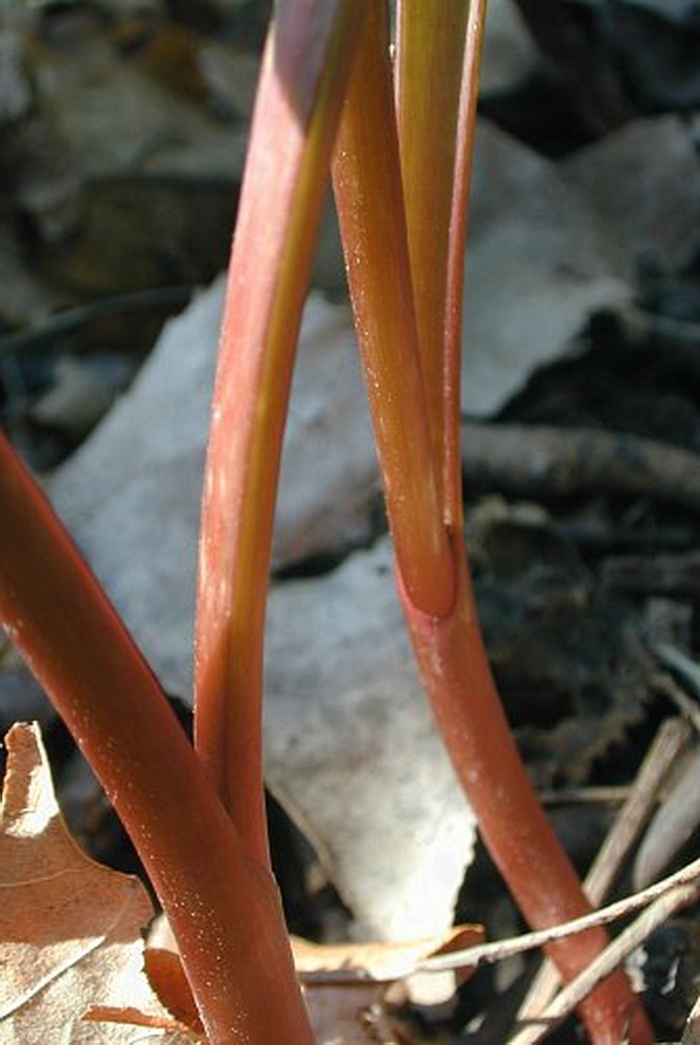
Comments: This woodland wildflower is somewhat unusual because its foliage has withered away by the time the flowers bloom. Both the foliage and flowers are attractive; the latter help to brighten the gloomy corners of woodlands during the summer. Wild Leek has the widest basal leaves (1½–3½" across) of any Allium sp. in the state. A similar species, Allium burdickii (which is also called 'Wild Leek'), has basal leaves that are about ½-1½" across. Other wild Allium spp. have leaves that are narrow and strap-like (less than ½" across). Wild Leek has about 20-40 flowers in each umbel, while Allium burdickii has 10-20 flowers in each umbel. Wild Leek has reddish leaf petioles and flowering stalks that are often reddish at the base, while the petioles and stalks of Allium burdickii are light green throughout. This latter species is restricted to wooded areas in NE Illinois and it is less common.
Cultivation: The preference is dappled sunlight during the spring when the basal leaves develop, while during the summer considerable shade is tolerated as the basal leaves have withered away. The soil should consist of a rich loose loam with abundant organic matter, while moisture levels should be more or less mesic. It is easiest to introduce new plants into an area by dividing and transplanting the bulbs during the fall.
Range & Habitat: The native Wild Leek occurs occasionally in central and northern Illinois, while in the southern section of the state it is rare or absent (see Distribution Map). Habitats include mesic deciduous woodlands and wooded bluffs. The presence of this species is a sign that the original flora of a woodlands is still in intact. An introduced species, Alliaria petiolata (Garlic Mustard), can shade out the basal leaves of Wild Leek during the spring, causing the latter to decline in abundance.

Faunal Associations: The flowers attract various kinds of bees, including Halictid bees, masked bees (Hylaeus spp.), honeybees, bumblebees, and mason bees. These insects suck nectar or collect pollen. To a lesser extent, the flowers are visited by Syrphid flies, which suck nectar or feed on pollen. Occasionally, the maggots of some flies feed on the bulbs of some Allium spp. (Onions), although not necessarily Wild Leek; these species include Delia antiqua (Onion Maggot), some Eumerus spp., and some Tritoxa spp. The plant bugs, Lindbergocapsus ainsliei and Lindbergocapsus allii, also feed on Allium spp. (Onions). Another species, Thrips tabaci (Onion Thrips), sucks juices from the foliage. Deer and other mammalian herbivores rarely browse on the foliage of Wild Leek.
Photographic Location: A mesic deciduous woodlands at Busey Woods in Urbana, Illinois.

Comments: This woodland wildflower is somewhat unusual because its foliage has withered away by the time the flowers bloom. Both the foliage and flowers are attractive; the latter help to brighten the gloomy corners of woodlands during the summer. Wild Leek has the widest basal leaves (1½–3½" across) of any Allium sp. in the state. A similar species, Allium burdickii (which is also called 'Wild Leek'), has basal leaves that are about ½-1½" across. Other wild Allium spp. have leaves that are narrow and strap-like (less than ½" across). Wild Leek has about 20-40 flowers in each umbel, while Allium burdickii has 10-20 flowers in each umbel. Wild Leek has reddish leaf petioles and flowering stalks that are often reddish at the base, while the petioles and stalks of Allium burdickii are light green throughout. This latter species is restricted to wooded areas in NE Illinois and it is less common.
0
0
文章
Miss Chen
2018年04月30日

Description: This herbaceous perennial plant is 1-3' tall and either unbranched or sparingly branched. The central stem and any secondary stems are light green, glabrous, and terete. Each plant has 1-4 alternate leaves that are widely spreading. Individual leaves are up to 1½' long and 1½' across (excluding the petiole); they are bipinnate or tripinnate, dividing into 3 primary leaflets and subdividing into 3-5 (rarely 7) ultimate leaflets. When tertiary leaflets are present, there are typically 3 secondary leaflets in each compound leaf. The ultimate leaflets (whether secondary or tertiary) are 1¼–3½" long, more or less ovate in shape, and coarsely toothed along their margins; some ultimate leaflets are sharply divided into 1-2 smaller lobes. The upper leaf surface is medium green and glabrous, while the lower leaf surface is slightly more pale and either glabrous or hairy along the major veins. The petioles are up to 6" long, light green, and glabrous.

The central stem and any secondary stems terminate in solitary racemes of flowers that are 1-2" long; these racemes become slightly longer when the flowers are replaced by berries. Each flower is about ¼" across or slightly wider, consisting 4-10 white petals, several inconspicuous sepals, 15-40 white stamens, and a pistil. The petals are widely spreading and narrowly elliptic in shape, while the stamens are long and showy. The style of the pistil is very short or absent, while the stigma of the pistil is short and stout. The ascending to widely spreading pedicels are up to ½" long (or slightly more) and they are noticeably more slender than the rachis (central stalk) of the raceme. The peduncle (basal stalk) of each raceme is up to 4" long. The blooming period occurs during late spring or early summer, lasting about 3 weeks. The flowers have a rosy fragrance. Afterwards, fertile flowers are replaced by ovoid berries that become 6-8 Distribution Mapmm. long at maturity. These berries are usually bright red and glossy at maturity, although there is a less common form of this plant that has white berries. Each berry contains a fleshy pulp and several seeds. Individual seeds are 3.0–3.5 mm. long, reddish brown, and wedge-shaped. The root system consists of a vertical rootstock with fibrous secondary rootlets below.
Cultivation: The preference is light to moderate shade, moist to mesic conditions, and a somewhat acidic soil consisting of sandy loam, loam, or clay-loam with decaying organic matter. The soil should contain abundant nitrogen, calcium, and other nutrients. The seeds are slow to germinate, typically taking 2 years or more under natural conditions. This plant prefers cool moist weather and it is winter hardy to at least Zone 4.
Range & Habitat: The native Red Baneberry occurs in northern Illinois, where it is uncommon. Illinois lies along the southern range-limit of this species. Habitats include moist to mesic woodlands, shady stream banks, and shaded areas where some seepage of ground water occurs. In Illinois, this plant is found in high quality natural areas where either deciduous trees or a mixture of deciduous trees and conifers occur. North of the state, it also occurs in conifer forests. Red Baneberry is able to survive occasional wildfires.
Faunal Associations: The flowers of Red Baneberry attract miscellaneous beetles, flies, and to a lesser extent Halictid bees (Pellmyr, 1985). Only pollen is available as a floral reward. Some vertebrate animals feed on the fruits or seeds of this plant. Examples of birds that eat the fruits include the Ruffed Grouse, Yellow-bellied Sapsucker, American Robin, Wood Thrush, Gray-cheeked Thrush, Brown Thrasher, and Catbird. Examples of small mammals that eat the seeds (while usually rejecting the pulp) include the Woodland Deer Mouse, White-footed Mouse, Eastern Chipmunk, Red Squirrel, and Red-backed Vole (Crane, 1990; Martin et al., 1951/1961; Hamilton, 1941). Because the foliage is somewhat toxic, it is usually avoided by mammalian herbivores. All parts of this plant, including the fruit, are toxic to humans.
Photographic Location: A woodland in Lake County, Illinois. The photographs were taken by Paul Showers (Copyright © 2015).
Comments: Because of its attractive foliage, flowers, and bright red berries, Red Baneberry (Actaea rubra) is an excellent selection for cool shade gardens. It is similar in appearance to Doll's Eyes (Actaea pachypoda), except the latter species always has white berries. When Red Baneberry produces white berries, it can be distinguished from Doll's Eyes by its more slender pedicels (basal stalklets of the flowers or berries). The pedicels of Doll's Eyes are nearly as thick as the rachis (central stalk) of the floral raceme. Doll's Eyes tends to have longer racemes, but this distinction is not always reliable. The latter species can be found throughout Illinois.

The central stem and any secondary stems terminate in solitary racemes of flowers that are 1-2" long; these racemes become slightly longer when the flowers are replaced by berries. Each flower is about ¼" across or slightly wider, consisting 4-10 white petals, several inconspicuous sepals, 15-40 white stamens, and a pistil. The petals are widely spreading and narrowly elliptic in shape, while the stamens are long and showy. The style of the pistil is very short or absent, while the stigma of the pistil is short and stout. The ascending to widely spreading pedicels are up to ½" long (or slightly more) and they are noticeably more slender than the rachis (central stalk) of the raceme. The peduncle (basal stalk) of each raceme is up to 4" long. The blooming period occurs during late spring or early summer, lasting about 3 weeks. The flowers have a rosy fragrance. Afterwards, fertile flowers are replaced by ovoid berries that become 6-8 Distribution Mapmm. long at maturity. These berries are usually bright red and glossy at maturity, although there is a less common form of this plant that has white berries. Each berry contains a fleshy pulp and several seeds. Individual seeds are 3.0–3.5 mm. long, reddish brown, and wedge-shaped. The root system consists of a vertical rootstock with fibrous secondary rootlets below.
Cultivation: The preference is light to moderate shade, moist to mesic conditions, and a somewhat acidic soil consisting of sandy loam, loam, or clay-loam with decaying organic matter. The soil should contain abundant nitrogen, calcium, and other nutrients. The seeds are slow to germinate, typically taking 2 years or more under natural conditions. This plant prefers cool moist weather and it is winter hardy to at least Zone 4.
Range & Habitat: The native Red Baneberry occurs in northern Illinois, where it is uncommon. Illinois lies along the southern range-limit of this species. Habitats include moist to mesic woodlands, shady stream banks, and shaded areas where some seepage of ground water occurs. In Illinois, this plant is found in high quality natural areas where either deciduous trees or a mixture of deciduous trees and conifers occur. North of the state, it also occurs in conifer forests. Red Baneberry is able to survive occasional wildfires.
Faunal Associations: The flowers of Red Baneberry attract miscellaneous beetles, flies, and to a lesser extent Halictid bees (Pellmyr, 1985). Only pollen is available as a floral reward. Some vertebrate animals feed on the fruits or seeds of this plant. Examples of birds that eat the fruits include the Ruffed Grouse, Yellow-bellied Sapsucker, American Robin, Wood Thrush, Gray-cheeked Thrush, Brown Thrasher, and Catbird. Examples of small mammals that eat the seeds (while usually rejecting the pulp) include the Woodland Deer Mouse, White-footed Mouse, Eastern Chipmunk, Red Squirrel, and Red-backed Vole (Crane, 1990; Martin et al., 1951/1961; Hamilton, 1941). Because the foliage is somewhat toxic, it is usually avoided by mammalian herbivores. All parts of this plant, including the fruit, are toxic to humans.
Photographic Location: A woodland in Lake County, Illinois. The photographs were taken by Paul Showers (Copyright © 2015).
Comments: Because of its attractive foliage, flowers, and bright red berries, Red Baneberry (Actaea rubra) is an excellent selection for cool shade gardens. It is similar in appearance to Doll's Eyes (Actaea pachypoda), except the latter species always has white berries. When Red Baneberry produces white berries, it can be distinguished from Doll's Eyes by its more slender pedicels (basal stalklets of the flowers or berries). The pedicels of Doll's Eyes are nearly as thick as the rachis (central stalk) of the floral raceme. Doll's Eyes tends to have longer racemes, but this distinction is not always reliable. The latter species can be found throughout Illinois.
0
0






